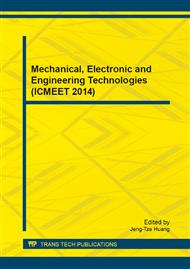[1]
Giesekus H. Disperse systems: depence of rheological properties on the type of flow with implications for food rheology[J]. In Physical Properties of Foods, Jowitt, e. a., Ed., London: Applied Science: 205-220(1983).
Google Scholar
[2]
Chilcott MD, Rallison JM. Creeping flow of dilute polymer solutions past cylinders and spheres[J]. Non-Newtonian Fluid Mech, 29, 381-432(1988).
DOI: 10.1016/0377-0257(88)85062-6
Google Scholar
[3]
Hou L, Cai L. Nonlinear property of the visco-elastic-plastic material in the impact problem [J]. Journal of Shanghai University (English Edition), (01): 23-28(2009).
DOI: 10.1007/s11741-009-0106-3
Google Scholar
[4]
Hou L. Failure modes analysis in the crash barrier[J]. Proc 5th Euro LS-DYNA User's Conference, the ICC Birminghang, 5B-02(2005).
Google Scholar
[5]
Lei H, Lin D Z, Li H L. Computational Modeling on the Complex Boundary Conditions in the Impact Problem[C]. International Conference on Computer and Network Technology, 4: 231-235(2011).
Google Scholar
[6]
Johnson M, Segalman D. A model for viscoelastic fluid behavior which allows non-affine deformation [J]. Non-Newt Fluid Mech, 2: 225-270(1977).
DOI: 10.1016/0377-0257(77)80003-7
Google Scholar
[7]
Giesekus H. A unified approach to a variety of constitutive models for polymer fluids based on the concept of configuration-dependent modecular mobility[J]. RheolActa, 21: 366-375(1982).
DOI: 10.1007/bf01534296
Google Scholar
[8]
Weaire D, Hou L. A note on the statistics of the mature 2-D soap forth[J]. Phil Mag Letters, 1990, 62(6): 427-430.
Google Scholar


